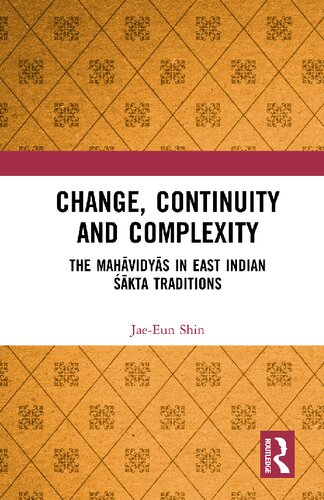

Most ebook files are in PDF format, so you can easily read them using various software such as Foxit Reader or directly on the Google Chrome browser.
Some ebook files are released by publishers in other formats such as .awz, .mobi, .epub, .fb2, etc. You may need to install specific software to read these formats on mobile/PC, such as Calibre.
Please read the tutorial at this link: https://ebookbell.com/faq
We offer FREE conversion to the popular formats you request; however, this may take some time. Therefore, right after payment, please email us, and we will try to provide the service as quickly as possible.
For some exceptional file formats or broken links (if any), please refrain from opening any disputes. Instead, email us first, and we will try to assist within a maximum of 6 hours.
EbookBell Team

4.7
46 reviewsThe Mahāvidyās are the representative Tantric feminine pantheon consisting of ten goddesses. It is formed by divergent religious strands and elements: the mātṛ and yoginī worship, the cult of Kālī and Tripurasundarī, Vajrayāna Buddhism, Jain Vidyādevīs, Śaiva and Vaiṣṇava faith, Śrīvidyā, the Brahmanical strand of Puranic traditions, etc. This volume is the first attempt to explore the historical process, through which these traditions culminated in the Mahāvidyā cult and the goddesses with different origins and contradictory attributes were brought into a cluster, with special reference to socio-political changes in the lower Gaṅgā and Brahmaputra Valley between the 9th and 15th centuries CE.
Based on a close analysis of Purāṇas, Tantras and inscriptional evidence, and on extensive field research on archaeological remains as well as sacred sites, Jae-Eun Shin discusses the two trajectories of the Mahāvidyās in eastern Śākta traditions. Each led to the systematization of Daśamahāvidyās in a specific way: one, as ten manifestations of Durgā upholding dharma in the cosmic dimension, and the other, as ten mandalic goddesses bearing magical powers in the actual sacred site. Their attributes and characteristics have neither been static nor monolithic, and the mode of worship prescribed for them has changed in a dialectical religious process between Brahmanical and Tantric traditions of the region.
This is the definitive work for anyone seeking to understand goddess cults of South Asia in general and the history of eastern Śākta traditions in particular. To aid study, the volume includes images, diagrams and maps.
Please note: Taylor & Francis does not sell or distribute the Hardback in India, Pakistan, Nepal, Bhutan, Bangladesh and Sri Lanka.